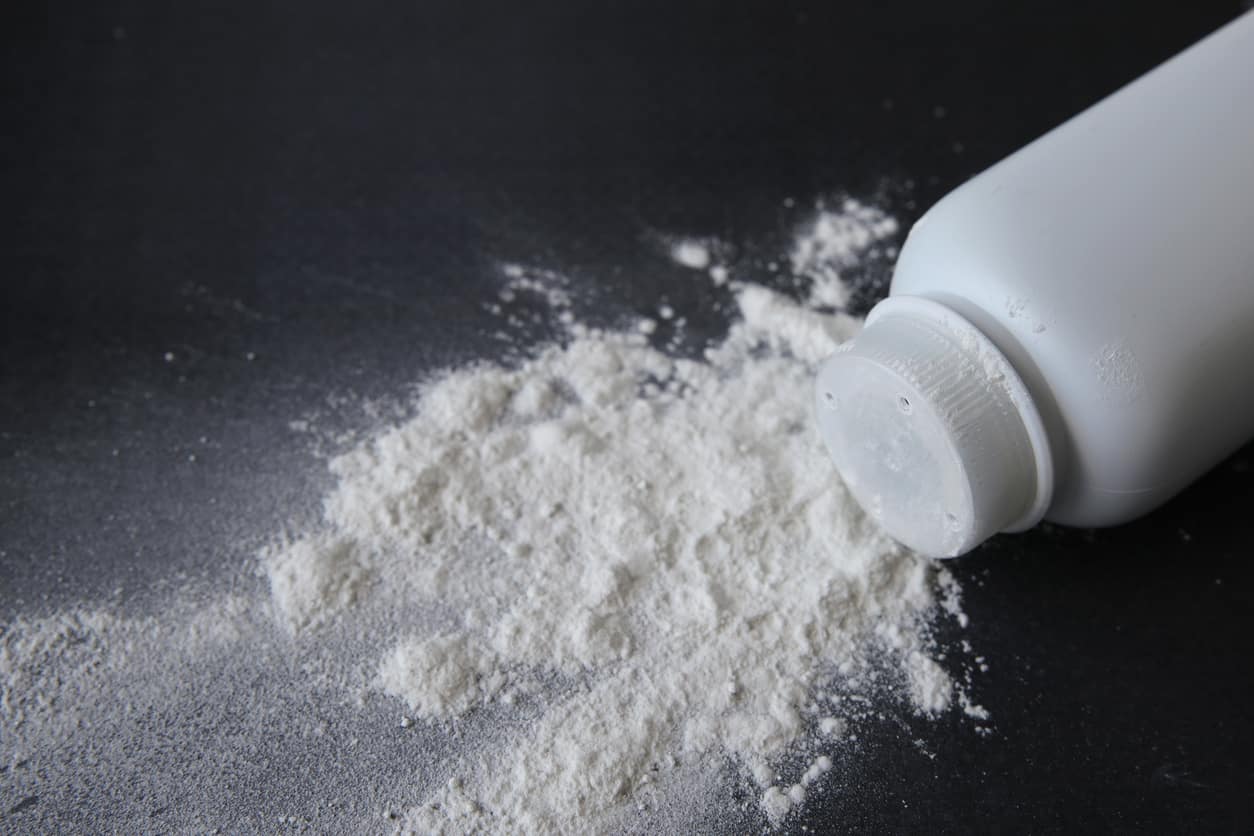
Its aroma is so distinctive, yet equally indescribable. But catching just a trace of the sweet scent of baby powder is probably enough to evoke memories of freshly changed diapers, cleansing cosmetics, or subtle air fresheners.
Yet this product, which is synonymous with the words fresh and clean, has also been linked to a deadly disease – ovarian cancer. More than 2,800 Canadian women will be newly diagnosed with the fifth most common and most serious cancer in women this year. A variety of genetic and environmental factors may contribute to increasing a woman’s risk of developing ovarian cancer. In this blog post, I explore some research into the long-term use of baby (talcum) powder and why the manufacturer would prefer if you would focus on its pleasant smell instead of its potentially carcinogenic properties.
Talcum Powder and Cancer
Derived from the mineral talc, which contains the elements magnesium, silicon, and oxygen, ground up talcum powder has been used for more than a century to absorb moisture and prevent friction from skin-to-skin contact. Along with corn starch, it is commonly used as a baby powder to treat diaper rash, and other cosmetics.
In its natural form, some talc contains asbestos, but this form has not been sold commercially for decades. Talc containing asbestos is a known carcinogen that can cause cancer when ingested, usually when its asbestos containing fibres are breathed in, and people whose occupations or personal relationships put them in close and frequent contact with these fibres have an increased risk of developing cancer.
However, studies dating back to the 1970s have also raised concerns that asbestos-free talcum powder may also increase a woman’s risk of developing ovarian cancer by a third when applied regularly and over a long-term on her genitals.
Ovarian Cancer
Abnormal and uncontrollable growth of any one of a variety of types of ovarian cells can result in malignant tumours causing ovarian cancer. About 90 per cent of these cancers affect epithelial cells which cover the lining of the fallopian tube or ovary. Another five to 10 per cent of ovarian cancers affect the germ cells from which eggs form. The least common type of ovarian cancer, affecting the sex cord stromal cell, involves the cells that hold the ovaries together and produce female hormones.
All women have some risking of developing ovarian cancer, but certain factors increase that risk:
- Age –risk increases with age and ovarian cancer is most common in women aged between 50-79.
- Genetics and Ethnicity – a close familial/blood relation who have had breast cancer prior to age 50 or ovarian cancer at any age. Certain ethnic groups also have higher overall rates of ovarian cancer.
- Reproductive History and Hormone Replacement – women who had not given birth or have had difficulty conceiving are at higher risk of developing ovarian cancer, as are those who have taken hormone replacements. Women who have used oral contraceptives for a period of at least five years are at a lower risk.
- Endometriosis – Women with this condition, where tissue that normally grows in the uterus grows on fallopian tubes and ovaries, are also at a higher risk.
Talcum Powder and Ovarian Cancer
Although vigorously contested by baby powder manufacturer, scientific research conducted since the 1970s has established a direct link between long-term use of the substance and an increased risk of developing ovarian cancer. In fact, when talcum powder is applied directly to a woman’s genitals or on items such as underwear, sanitary napkins, tampons or diaphragms which come into contact with the genitals, case control studies suggest the risk of developing ovarian cancer rises by about 33 per cent.
The reasons why and how regular and long-term talcum powder use increases the risk of ovarian cancer are not fully known, but experts such Dr. Daniel Cramer speculate that the substance may enter the vagina, eventually make its way up the genital tract, and cause chronic tissue inflammation which is known to predispose a person to developing cancers. One case Cramer has studied found evidence of the mineral talc in the pelvic lymph nodes of a woman who had used the powder on her genitals for decades.
This type of evidence and expert testimony has been compelling in American jury trials where women with ovarian cancer (or families acting on behalf of their deceased loved ones) have been awarded tens of millions of dollars – both compensatory (for actual losses) and punitive (for manufacturer’s failure to warn consumers about talcum powder’s cancer risks).
If you or a loved one (even if they are deceased) has ovarian cancer that you believe may be linked to long-term use of talcum powder, please contact personal injury lawyer Paul Miller at 416-646-3901 or by email at pmiller@hshlawyers.com for information about whether you may qualify for compensations and damages.






